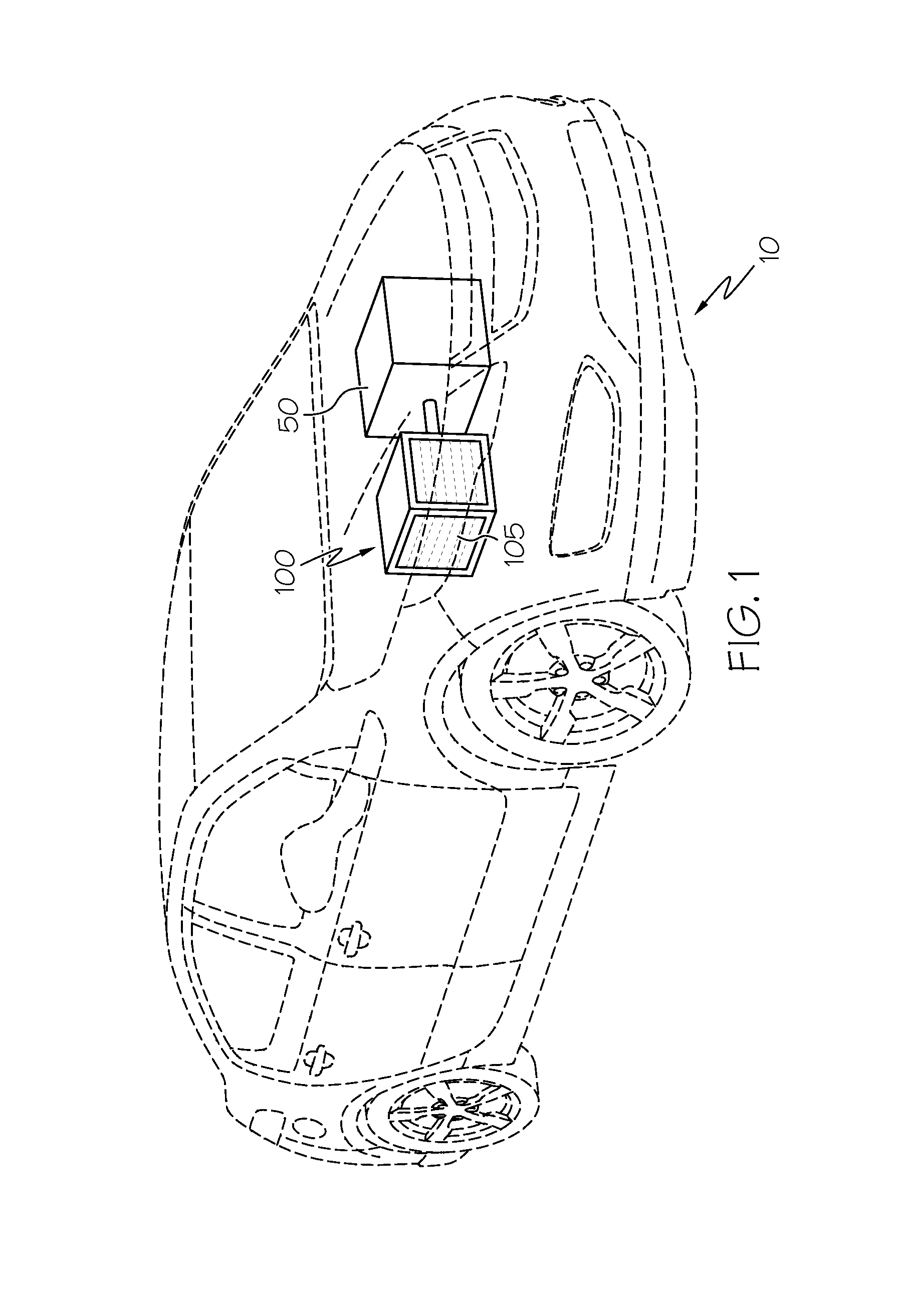Predictive cathode compressor speed control in a fuel cell power system
a technology of fuel cell power system and cathode compressor, which is applied in the direction of reactant parameter control, fuel cell, motive system fuel cell, etc., can solve the problems of excessive cathode drying, excessive cathode damage, and inaccurate prediction of the needed compressor speed, so as to reduce the adiabatic efficiency of the compressor and quick regulate the stack flow
- Summary
- Abstract
- Description
- Claims
- Application Information
AI Technical Summary
Benefits of technology
Problems solved by technology
Method used
Image
Examples
Embodiment Construction
[0017]Calculations performed in accordance with the present invention are preferably used in a predictive capacity to decide a future compressor operational position. Feedforward terms, such as the new setpoints, may be used, as may other parameters (such as the compressor speed or other feedback-based parameters). Furthermore, the controller may include proportional-integral-derivative (PID) capabilities to generate a compensational (i.e., feedback-based) term for the new operational position; this feedback-based term tries to eliminate the error (or difference) between the compressor setpoint and the present feedback value. As such, the new (or future or predicted) setpoint of the compressor is based predominantly on the sum of the feedforward (i.e., open-loop) term with an optional additional contribution from the feedback (i.e., closed-loop) term. It will be appreciated by those skilled in the art that the new compressor position, even though it may utilize feedback information ...
PUM
 Login to View More
Login to View More Abstract
Description
Claims
Application Information
 Login to View More
Login to View More - R&D
- Intellectual Property
- Life Sciences
- Materials
- Tech Scout
- Unparalleled Data Quality
- Higher Quality Content
- 60% Fewer Hallucinations
Browse by: Latest US Patents, China's latest patents, Technical Efficacy Thesaurus, Application Domain, Technology Topic, Popular Technical Reports.
© 2025 PatSnap. All rights reserved.Legal|Privacy policy|Modern Slavery Act Transparency Statement|Sitemap|About US| Contact US: help@patsnap.com



